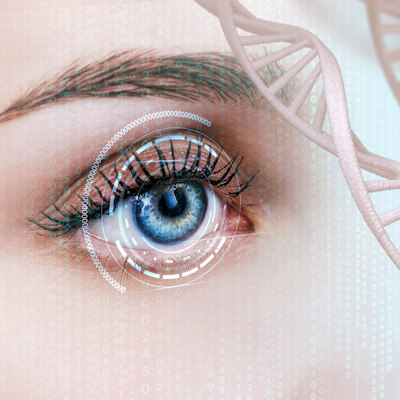October 31, 2022 -- National Institutes of Health (NIH) scientists have a new understanding of Stargardt disease, a rare disorder that causes progressive loss of central and night vision. The discovery suggests a therapeutic pathway to treat the disease, which may help lead to gene therapy.
Using stem cells made from skin cells, the National Eye Institute (NEI) team, which is part of the NIH, found the first direct evidence that ABCA4 gene mutations affect the retinal pigment epithelium (RPE) (Stem Cell Reports, October 27, 2022).
The vision loss associated with Stargardt disease stems from the toxic build-up of lipid-rich deposits in the RPE. Normally, the ABCA4 gene makes a protein that prevents this toxic build-up, but a gene mutation can impair this process. To further understand the disease mechanism, the scientists took skin cells from Stargardt patients and converted them into stem cells and then RPE cells.
Researchers detected the ABCA4 protein on the RPE cell membrane and explored the function of ABCA4 in RPE development by using CRISPR-Cas9 to generate patient-derived RPE lacking ABCA4. Knocking out ABCA4 did not affect maturation of the patient-derived RPE, but when the RPE lacking ABCA4 were exposed to normal (wild type) photoreceptor outer segments, the RPE cells accumulated intracellular lipids deposits.
More tests revealed evidence of defective RPE lipid metabolism and an impaired ability to digest photoreceptor outer segments, leading to lipid deposits in RPE cells. This is the first study where the loss of ABCA4 function in has been associated with intracellular lipid deposits in those cells, without exposure to ABCA4 mutant photoreceptor outer segments, according to the authors. Eventually, these deposits may contribute to RPE atrophy and lead to photoreceptor degeneration, they added.
The discovery suggests that in addition to correcting ABCA4 loss of function in photoreceptors, gene therapies must also target RPE cells, the scientists said.
Copyright © 2022 scienceboard.net







